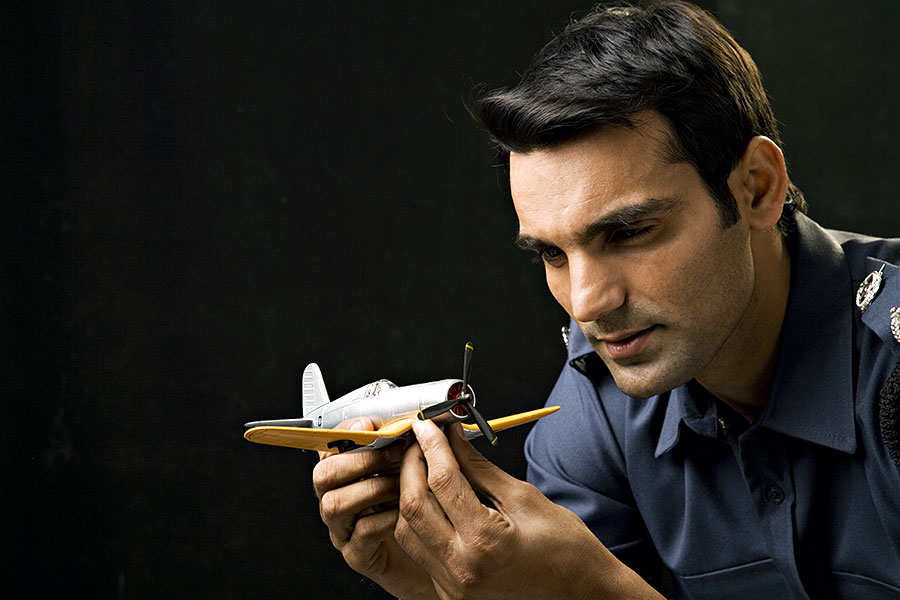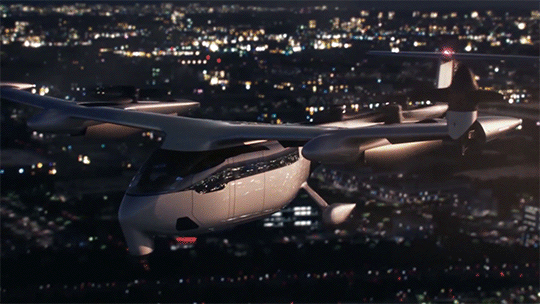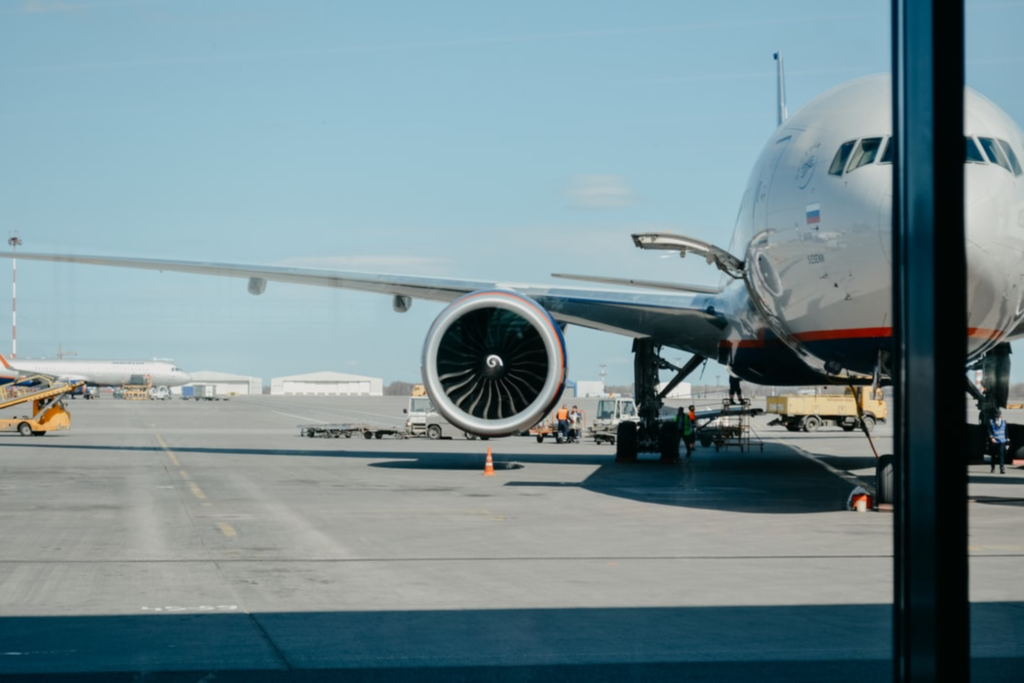Registration open for IASAT 2026 Are Now Open! Limited Seats Available — Apply Today.
Aviation Industry
Aviation is the branch of engineering that is least forgiving of mistakes.
Why the Aviation Industry is important?
Many people dream of careers in the dynamic aviation industry, and with good reason. Not only does a high-flying career promise adventure and excitement, but jobs in aviation come with other benefits as well, including everything from flexibility to job security. So how do you know which aviation field to study? Here’s a closer look at some to consider. Aviation provides the only rapid worldwide transportation network, which makes it essential for global business. It generates economic growth, creates jobs, and facilitates international trade and tourism. The air transport industry also supported a total of 62.7 million jobs globally. Aviation is one of the most “global” industries: connecting people, cultures and businesses across continents. Colleagues throughout the sector are committed to raising awareness of the benefits and the role of aviation.
It is necessary for all stakeholders and partners to work together to maximize the benefits of air transport, and to support the sustainable growth of aviation by connecting more people and more places, more often. Every day, around 100,000 flights transport over 10 million passengers and around USD18 billion worth of goods. . It provided 9.9 million direct jobs. Airlines, air navigation service providers and airports directly employed over three million people. The civil aerospace sector (the manufacture of aircraft, systems and engines) employed 1.1 million people.
A further 5.5 million worked in other on-airport positions. 52.8 million Indirect, induced and tourism-related jobs were supported by aviation. The availability of reliable air transport services provides people with access to what they need: better living standards, food, healthcare, education, safe communities and spaces, etc. Aviation is by far the world’s safest and most efficient mode of long-range transportation. It often serves as the only possible means of transportation to provide health care and food supplies to many remote communities, and it is a fast and reliable way to deliver urgent humanitarian aid during emergencies caused by natural disasters, famine and war. In remote or peripheral regions, air transport functions as an essential service to provide lifeline connections that otherwise would not be available. The contribution of aviation to the global economy is approximately equivalent
to the overall GDP of the United Kingdom. Aviation is a highly productive industry, as measured in terms of GDP per worker. At an average of USD 69,000 per worker per year, this is around three and a half times the average across the world economy as a whole, exceeding most other sectors of the economy. Air transport employees are considered to be highly skilled, trained and experienced.Aviation creates unique possibilities for empowering nations and peoples, regardless of their geographic location. It is a means of allowing people to access what they need: improved livelihoods, food, healthcare, education, safe communities and spaces, etc. Whether it be responses to crises in hours of dire need, humanitarian aid, or leisure activities like vacations and visiting friends and relatives, aviation plays a vital role in promoting social causes and satisfying needs around the world.
For all vulnerable groups, as well as for migrant communities people living in remote and low density rural areas, air transport services are a lifeline to enhance their social inclusion.Ensuring inclusive and equitable Educational Opportunities and promoting lifelong learning are fundamental needs in a society. The number of students who chose to study abroad increased from 2.1 million in 2000 to 5.1 million in 2017, indicating a new generation of mobile young people eager to learn and expand their horizons 57.
For many, access to higher quality education necessitates travelling abroad, sometimes to another region of the globe. Without air transport, these opportunities would not be feasible, particularly for shorter-term university exchange programmes such as the European Erasmus system. For students from developing countries, the opportunity to travel to established universities for higher education is invaluable. Not only does this promote individual personal development, but it also delivers consequential benefits for the home country, since these students return home armed with the knowledge and skills to contribute to their home economy. Aviation contributes to Improving Quality of Life by broadening people’s leisure and cultural experiences. It provides an affordable means to visit distant friends and relatives. Low cost and more frequent access to air travel has increased the range of potential holiday destinations
Is Aviation Special?
Aviation may be considered as “special” due to safety and security requirements and possibly the existence of environmental xternalities. According to various economic studies, however, there is little or no evidence that aviation has unique economic characteristics, compared to other modes of transport and service industries. Nevertheless, more than a majority of bilateral air services agreements still include the 70-year-old traditional provisions partially because there is a significant cost in each State to change the well-established regulatory framework. The key to addressing the dynamic and rapid transformations shaping the aviation sector is the establishment and application of good regulatory practices and, more broadly, good governance – the institutional, regulatory, and policy frameworks in which air transport is designed, implemented and managed. For example, States should comply with ICAO’s global standards and policies; adhere to international air law instruments; separate their oversight functions from the operations of airports and air navigation services; enhance the transparency of relevant States’ policies and practices; take a data driven approach, including an assessment of the impacts and results of the regulation, etc.

Aviation sector in INDIA
Remembering JRD Tata: The Father of Indian Civil Aviation. On the 29th of July, the entire aviation industry and the nation itself celebrated the 112th birth anniversary of the iconic industrialist Jehangir Ratanji Dadabhoy (JRD) Tata, known better as the Father of Indian Civil Aviation.
Indian Aviation, flying high
Aviation in India, broadly divided into military and civil aviation, is the fastest-growing aviation market in the world according to the International Air Transport Association (IATA). The hub of the nation’s aviation manufacturing industry is at Bangalore which has a 65% share of this economic sector.
India is the 5th largest market in terms of aircraft passengers (domestic and international) and fastest growing domestic air market in the world
The Aviation sector in India currently contributes $72 billion to GDP.
India has 464 airports and airstrips, of which 125 airports are owned by Airport Authority of India (AAI). These 125 AAI airports manage close to 78% of domestic passenger traffic and 22% of international passenger traffic.
Passenger traffic in India stood at 316.51 mn during April 2018 – Feb 2019. Out of which domestic passenger traffic stood at 252.92 mn while international traffic stood at 63.59 mn. The aircraft movement, passenger traffic and freight traffic increased by 4.9%, 4.5% and 3.1% respectively in February 2019 viz-a-viz February 2018, across all Indian airports taken together. However, the share of international cargo traffic is much higher at 68.5% in comparison with 31.5% of domestic cargo traffic.Maintenance, Repair & Overhaul (MRO) industry is expected to grow to $1.2 bn by 2020 from $950 mn currently.
India has 91 international carriers comprising of 5 Indian carriers and 86 foreign carriers, which ensure that India is well connected with most major countries. Revenue passenger kilometer (RPK) in domestic airline demand growth of 18.6% in 2018 was three times the global RPK growth of 6.5%. Under National Policy on Civil Aviation 2016, India will promote the entire aviation sector chain in a harmonised manner covering cargo, Maintenance, Repair, Overhaul (MRO) general aviation, aerospace manufacturing and skill development and which will lead to significant growth of civil aviation sector, which in turn would promote tourism, increase employment and lead to a balanced regional growth. India has the highest proportion of female commercial pilots which is more double the global average of 5%. The most notable government initiative in civil aviation is Ude Desh Ke Aam Nagarik (UDAN)- which is a regional airport development and connectivity scheme. Its objective is to enable “the common citizen of the country to fly”. It aims to make air travel affordable and widespread, while boosting inclusive national and economic development. Boeing plans to set up a maintenance and repair facility at its aerospace SEZ near Devanahalli airport. The facility will focus on assembly, and engineering technology with electronics/avionics manufacturing AAR, a global provider of aviation services to commercial airlines, announced a
joint venture with Indamer Aviation, a leading aviation company in India- for the development of a new airframe MRO facility in Nagpur. The new facility will initially comprise six narrow-body bays, including one bay for paint. Additional phases have been planned to increase this to 16 bays, as well as add component repair shops.
Indian carriers are projected to increase their fleet size to 1,100 aircraft by 2027. Freight traffic on Indian airports is expected to cross 11.4 MT by 2032. Government agencies projects requirement of around 250 brownfield and green-field airports by 2020. India is the fastest-growing aviation market and is expected to cater to 520 mn passengers by 2037. India has been projected to be the second-fastest-growing country in the world for passenger traffic by the Airports Council International (ACI) in its traffic forecasts between 2017-40. Demand for aircraft in India is expected to be 1,750 by 2037.
Up to 100% FDI is permitted in Non-scheduled air transport services, in MRO for maintenance and repair organizations; flying training institutes; and technical training institutes in helicopter services and seaplanes, in Ground Handling Services subject to sectoral regulations & security clearance under the automatic route.
- 11% Passenger traffic growth
- 15.9% Foreign Tourist Arrival growth
- 3.6 MMT Total freight traffic (MMT)
- 14.4% Domestic aircraft movement growth
The Union Cabinet has approved the Operation, Management and Development proposal leasing out for the Airports Authority of India (AAI) airports in Jaipur, Guwahati and Thiruvananthapuram via Public-Private Partnership Model (PPP). Adani Enterprises Ltd has been awarded the proposal. This move is aimed at improving the services delivery efficiency,infrastructure and AAI revenues. Airport Authority of India approved the plan to Spend 19000/- cr. to Upgrade the various Airports across India.
IGI Airport in Delhi will soon sport the country’s most technologically advanced and highest Air Traffic Control (ATC) tower, which will enhance the safety and the efficiency of air transport management services over the city’s sky. Mahindra Aerospace and Canada’s Viking Air have signed a memorandum of understanding to form a strategic alliance for making smaller aircraft to support regional air connectivity in India.
Airbus, leading European aircraft manufacturer, plans to invest $ 40 MN to set up a pilot and maintenance training center in New Delhi, which will be operational soon. GVK Power & Infrastructure Ltd., which operates the existing airports in Mumbai and Bangalore, has won the right to build Mumbai’s second airport in Navi Mumbai, which will require an investment of $ 2.4 Bn. to build the airport with a capacity to handle 10 million. passengers annually in the first phase and 60 million passengers a year by 2030. Ministry of Civil Aviation are planning to open aviation hubs/parks in various parts of the country (similar to existing defense hubs and corridors). The major key holders are Ministry of Civil Aviation Directorate General of Civil Aviation, Bureau of Civil Aviation Security, Airports Authority of India, Federation of Indian Airlines and International Civil Aviation Organization.

AVIATION SECTOR ACROSS THE WORLD
As the global economy is becoming more and more connected, the aviation industry is one of the fastest transportation sectors. Commercial airlines carried more than 4.5 billion passengers in 2019 and are expected to generate 581 billion U.S. dollars in global revenue in 2020. Air transportation also plays an important role for tourism, contributing to economic growth, especially in developing countries. The number of international tourist arrivals increased from 1.32 billion arrivals in 2017 to 1.4 billion in 2018; more than half of tourists chose to reach their destination by air transportation. In 2019, the number of scheduled passengers boarded by the global airline industry reached over 4.54 billion people.
Air transport also provides entrance to international markets and assists in the progress of world trade. Some 61.2 million metric tons of cargo was carried by air in 2019, generating 102.3 billion U.S. dollars in revenue. Contrary to road or rail transportation, the aviation industry has to pay for most of its own infrastructure and maintenance such as runways, terminals or air traffic control. In 2018, airports spent a little over 75 billion U.S. dollars in infrastructure with Asia Pacific mainly India accounting for the majority of new airport projects in the region. The aviation industry provides a total of 65.5 million jobs worldwide. It directly generates employment opportunities within the airlines, air navigation services providers and airport operators and additionally creates jobs via the supply chain in the transportation of goods and services.
Airline Passenger Traffic
The number of scheduled passengers handled by the global airline industry has increased in all but one of the last 15 years. Scheduled passengers refer to the number of passengers who have booked a flight with a commercial airline. Excluded are passengers on charter flights, whereby an entire plane is booked by a private group. As of 2018, the Asia Pacific region had the highest share of airline passenger traffic accounting for around one third of the global total. The region also includes the busiest air routes.
TYPES OF AIRPORT JOBS
If you’re ready to enter the aviation field, it’s important to have a strong understanding of aviation jobs available and aviation personnel salary potential. Pilots, Co-Pilots and Flight Engineers: With a pilots license, you can work as a commercial pilot or airline pilot, according to the U.S. Bureau of Labor Statistics(BLS). A commercial pilot does not require a college degree, and pilots unscheduled flights such as private, corporate or charter flights. As an airline pilot, you could work for an airline that transports passengers and cargo on a fixed schedule. According to the BLS, The median wage for commercial pilots was $78,740 in 2017, while airline pilots earned a median wage of $137,330 in 2017, BLS data shows. The aviation industry projects a large increase in available pilot jobs within the next 20 years.

Air Traffic Controller: As an air traffic controller you can help monitor and direct the movement of aircraft on the ground and in the air, issuing landing and takeoff instructions to pilots and communicating with flight and response crews in the event of an emergency. BLS data predicts air traffic control will remain a competitive field, with only 3% job growth expected by 2026. In 2017, air traffic controllers earned a median salary of $124,540, according to BLS data. Aircraft and Avionics Mechanics: As an aircraft mechanic, you’ll play a key role in the safety of airplane crew and passengers by examining, diagnosing and repairing electrical and mechanical problems. Aircraft mechanic jobs are projected to grow 5% by 2026, and earned a median salary of $61,020 in 2017, according to BLS data. Aeronautical Engineer: What is aeronautics? With a job as an aeronautical engineer, you can play a key role in the design, analysis, development and manufacturing of aircraft.
Aeronautical and aerospace engineers earned a median salary of $113,030 in May 2017, according to the BLS. BLS data projects aeronautical engineering jobs will grow 6% by 2026 as airlines work to produce quieter, more efficient aircraft. Airport Managers: As an airport manager, you’ll be responsible for overseeing the behind-the-scenes work of an airport, including maintenance and safety of the airfield, airport and airspace capacity management and airline scheduling. According to BLS data, general and operations managers earned a median salary of $100,410 in 2017. Transportation Security Screener: Interested in airline security? You could work for the Transportation Security Administration (TSA) screening passengers, baggage or cargo to ensure compliance with security regulations. According to the BLS, there were 42,470 transportation security jobs in 2017, with screeners earning an median salary of $40,580. In July 2018, the TSA announced plans to encourage career progression for current TSA workers, opening up new opportunities across the country.
Airfield Operations Specialists: As an airfield operations specialist, you can help ensure the safe takeoff and landing of aircraft, coordinating between air-traffic control and maintenance personnel to implement airfield safety procedures. According to BLS data, there were about 8,760 airfield operations specialist jobs in 2017, earning a median salary of $48,910. Aeronautical Engineer: What is aeronautics? With a job as an aeronautical engineer, you can play a key role in the design, analysis, development and manufacturing of aircraft. Aeronautical and aerospace engineers earned a median salary of $113,030 in May 2017, according to the BLS. BLS data projects aeronautical engineering jobs will grow 6% by 2026 as airlines work to produce quieter, more efficient aircraft.
Frequently Asked Questions
Who is an Aircraft Engineer?
An Aircraft Maintenance Engineer (AME), also Licensed Aircraft Maintenance Engineer (LAME or L-AME), is a licensed person who carries out and certifies aircraft maintenance.
What does an Aircraft Maintenance Engineer do?
Aircraft Maintenance Engineer (AME) ensures the airworthiness of an aircraft, whether it is a fixed-wing airplane or a helicopter. They identify problems and repair and overhaul aircraft structural, mechanical and electrical systems.
What is the future of an Aircraft Maintenance Engineer?
In India,Recent industry reports suggest that nearly 72,900 jobs for technicians and AMEs will be created in India across Airlines and MRO sector by 2035. The need is to equip the AMEs with skills that make them dynamic stakeholders of India’s economic future.
Who is an Aeronautical Engineer?
Aeronautical engineer work across design and development of aircraft parts, testing new aerodynamic and aviation system, quality management, and improvement maintenance.
Who is an Aerospace Engineer?
“Aerospace/Aeronautical engineers design primarily aircraft, spacecraft, satellites, and missiles. In addition, they create and test prototypes to make sure that they function according to designs”.
How to become Aircraft Maintenance Engineer?
(a) The applicant shall not be less than 16 years of age and physically fit. (b) The applicant shall have passed 10+2 examination with Physics, Chemistry, and Mathematics from a recognized Board (c) An applicant who passed their 3 years AICTE approved diploma in Aeronautical, Mechanical, Electrical, and Electronics engineering.
How can I get an Admission in AME?
For the admission in AME colleges in India and abroad, there is the procedure that student can follow: Students can first fulfill the eligibility criteria for the AME course. There is a direct Admission criterion. According to DGCA (Ministry of Civil Aviation) candidates can take direct admission to any organization which is approved for the AME training course. So, there is no need for any entrance examination.
Is there any Entrance Examination for AME Course?
No, there is no need to appear for any entrance exams. Moreover, DGCA (Ministry of Civil Aviation) who is the whole sole authority of Aviation in India doesn’t conduct any Entrance exam for the AME course.
Is there any Common Entrance Test(CET) to take admission for AME course in India?
No, there is no such exam for AME Course. According to DGCA you can directly join any organisation.
Our Students Say
Get Career Solutions
Boost your Success here
Aviation is all about the art of aeronautics. It deals with the designing, maintenance, production, development, and operations related to aircraft and heavier-than-air aircraft.
















